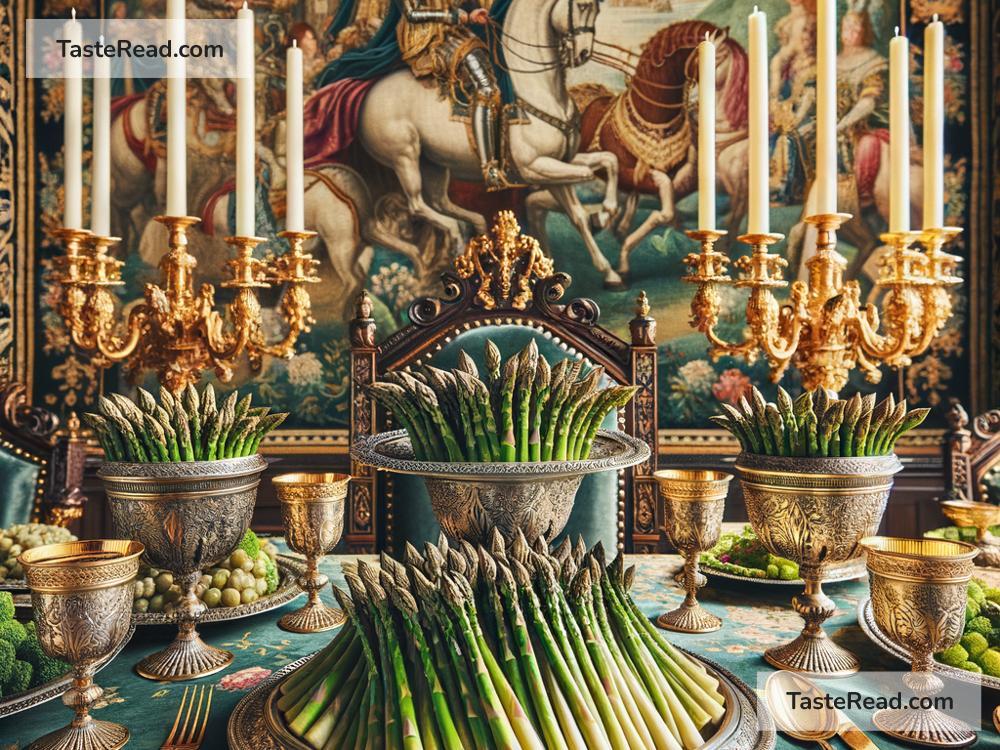The Fascinating History of Asparagus in European Royalty
Asparagus is one of the most popular vegetables of spring, prized for its tender stalks and delicious, slightly sweet flavor. But did you know that asparagus has a long and fascinating history, especially among European royalty? For centuries, this humble vegetable has been considered a luxurious delicacy, symbolizing wealth, sophistication, and even romance. Let’s take a step back in time and explore how asparagus became a favorite food of kings, queens, and noble households.
Asparagus in Ancient Times
Before it was celebrated by European royalty, asparagus had a special place in ancient cultures. Its origins can be traced back thousands of years to the Mediterranean region, where it grew wild. The ancient Egyptians were among the first to cultivate asparagus. Wall paintings from 3000 BC even depict the plant, showing that it was appreciated early on.
The Greeks and Romans also fell in love with asparagus. The Roman Empire is particularly famous for elevating the status of asparagus. Roman emperors, such as Augustus, considered asparagus to be the “food of the gods.” They were so passionate about this vegetable that they created special methods to preserve it. Roman chefs dried asparagus to ensure that it could be enjoyed year-round, not just during the growing season. The Romans even had a phrase, “Velocius quam asparagi coquantur,” which roughly means “faster than you can cook asparagus.” This expression shows how popular— and quick to prepare— asparagus was even back then.
During the fall of the Roman Empire, asparagus fell out of the spotlight in Europe. It continued to grow in the wild but wouldn’t regain its celebrity status until the Middle Ages and later.
The Renaissance Revival
As Europe entered the Middle Ages, asparagus began to attract attention again, especially in royal courts and monasteries. Monks cultivated asparagus in their gardens, not just for its flavor but also for its medicinal properties. People believed that asparagus had health benefits, such as improving digestion and acting as an aphrodisiac.
During the Renaissance (14th to 17th centuries), asparagus had its grand comeback. With the rise of wealthy noble families and royal courts, luxurious foods became an important display of power and refinement. Asparagus fit perfectly into this trend. It was difficult to grow, required specific conditions, and was only available for a short time in the spring. These factors made asparagus a rare and expensive treat, reserved for royalty and the elite.
Italy, France, and England embraced asparagus enthusiastically. The Italian Renaissance, led by figures such as the Medici family, saw asparagus included in lavish banquets. Catherine de’ Medici, an Italian noblewoman who married King Henry II of France, is said to have introduced asparagus to French cuisine. Once in France, asparagus quickly became a favorite at royal feasts.
Asparagus and King Louis XIV
No discussion of asparagus in European royalty would be complete without mentioning King Louis XIV of France, also known as the “Sun King.” Louis XIV ruled France in the 17th century and was known for his extravagant lifestyle. His endless love for luxurious food set many trends in Europe, asparagus among them.
In fact, Louis XIV was so fond of asparagus that he ordered his royal gardeners to grow it year-round. This was quite a challenge considering asparagus is traditionally a spring vegetable. To meet the king’s demands, gardeners at Versailles innovated ways to cultivate asparagus in greenhouses, ensuring it could be served at his meals regardless of the season. Thanks to Louis XIV’s obsession, asparagus became even more associated with wealth and sophistication.
Asparagus in England’s Royal Courts
Across the English Channel, asparagus was also gaining popularity in the royal courts of England. King Henry VIII, who reigned in the 16th century, was a known admirer of asparagus. Fancy dishes featuring asparagus appeared at banquets and celebrations alongside other rare treats.
Queen Elizabeth I also enjoyed asparagus, though she preferred it served with simple flavors rather than heavily spiced sauces. Her choice reflected how asparagus was appreciated for its natural taste.
By the 18th century, asparagus had become an icon of British fine dining, enjoyed not only by royalty but also by wealthy aristocrats. It was considered highly fashionable to serve asparagus spears at formal dinners, arranged neatly on silver platters.
A Vegetable for Everyone
While asparagus was originally a treat for royalty and the upper classes, it eventually spread to broader society. By the 18th and 19th centuries, farming techniques improved, making asparagus more affordable. Public markets began selling the vegetable, and cookbooks started featuring recipes for common households.
Today, asparagus is still considered a special vegetable, especially when it’s freshly picked in the spring. However, you don’t have to be a king or queen to enjoy it. Whether roasted, steamed, or grilled, asparagus remains a delicious addition to meals worldwide.
Conclusion
Asparagus has traveled through centuries of history, from ancient Egypt to the lavish tables of European royalty. Its association with luxury, health, and beauty made it a prized vegetable for kings and queens, especially during the Renaissance. Figures like King Louis XIV even went to extraordinary lengths to enjoy asparagus year-round, forever linking it to excess and extravagance.
Now, asparagus is available to everyone and can be enjoyed in a variety of ways. So the next time you sit down to eat a plate of asparagus, take a moment to remember its rich history and the role it played in royal kitchens long ago.


